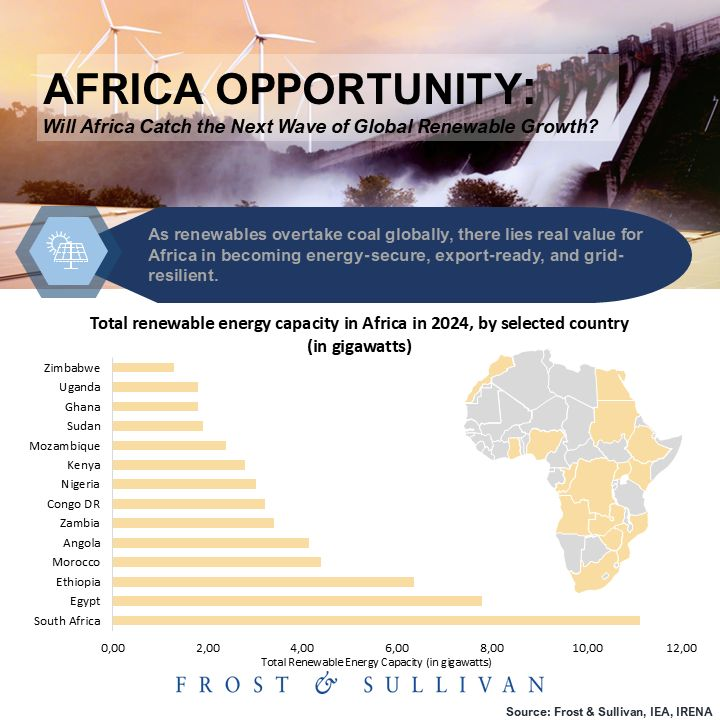Global electricity demand is expected to surge in 2026, with renewables overtaking coal for the first time to become the world’s largest source of power generation. This shift is being led by rapid deployment in markets like China, the EU, and the US, where policy and investment pipelines are aligning to accelerate transition.

In Africa, the opportunity is vast, but the current installed capacity tells a more cautious story. According to the IEA, South Africa leads the continent with 11.13 GW of renewable energy capacity, followed by Egypt, Morocco, and Ethiopia, together accounting for the majority of Africa’s clean energy rollout so far.
But to truly participate in the next wave of global demand, these pockets of momentum need to be matched by scale, grid investment, and cross-border collaboration.
Africa’s growing energy needs, abundant solar and wind resources, and increasing climate vulnerability make this not only a sustainability imperative but a strategic economic one.
The question is whether enough projects, and the infrastructure to support them, will move fast enough to shift Africa from a potential follower to an active driver of global clean energy trends.
What will it take for Africa to lead (not just participate) in the next phase of the global energy transformation?
Author
